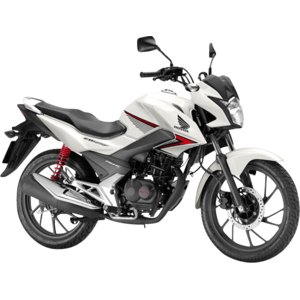Honda CB125F (2016-2020): The Perfect Entry Point to Motorcycling Freedom

Introduction
The Honda CB125F isn’t just a motorcycle – it’s a gateway. For riders stepping into the world of two wheels for the first time, this 125cc workhorse balances practicality, affordability, and just enough thrill to ignite a lifelong passion. Produced between 2016 and 2020, this generation refined Honda’s formula for the perfect starter bike, blending urban agility with surprising highway composure. After spending a week with a well-maintained 2019 model, it’s clear why this bike remains a favorite in used markets and riding schools alike.
Design & Styling: Small Bike, Big Attitude
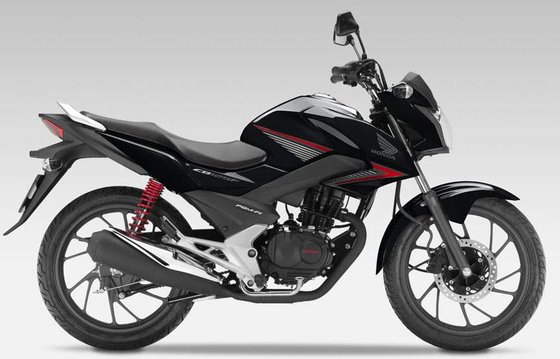
Honda nailed the "big bike" illusion here. The CB125F borrows styling cues from its larger CB siblings, featuring a muscular fuel tank with angular shrouds, a minimalist LED headlight cowl, and blacked-out components (fork legs, engine cases, exhaust) that hide its entry-level nature. The 18-inch cast aluminum wheels fill the proportions nicely, while the upright handlebars and 774mm (30.4-inch) seat height create an accessible, commanding riding position.
Color options like Candy Blazing Red and Pearl Twinkle Yellow pop in sunlight, though the matte finishes hide scratches better for daily commuters. The switchgear feels plasticky but survives drops – a blessing for learners. One gripe? The analog speedometer with digital gear indicator looks dated next to modern LCD dashes, but it’s gloriously simple.
Engine & Performance: Efficiency Meets Excitement
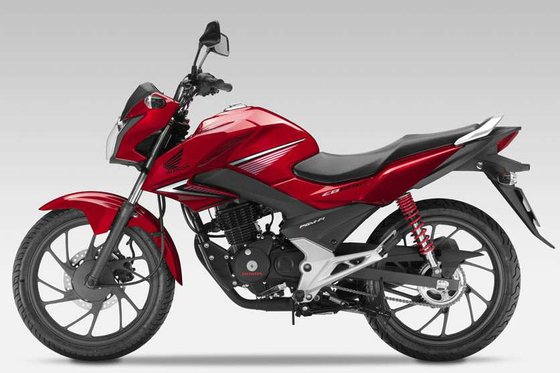
Don’t let the 124.7cc air-cooled single cylinder fool you – this engine punches above its weight. The fuel-injected 2-valve mill delivers 10.5 HP @ 7,750 RPM and 10.2 Nm (7.5 lb-ft) of torque peaking at 6,250 RPM. Translation: It’s all about the midrange.
Urban Warfare:
From 0-60 km/h (0-37 mph), the CB125F feels peppy, easily keeping pace with city traffic. The 5-speed gearbox shifts with a satisfying click, though finding neutral can be tricky until the clutch beds in. Fuel injection is a godsend – no choking required, even on crisp 5°C mornings.
Open Road Credentials:
At 80 km/h (50 mph), the engine hums at 7,000 RPM. Push to the 100 km/h (62 mph) ceiling, and vibrations creep through the bars, but the balancer shaft keeps things civil. Honda’s claimed 1.56L/100km (150.78 mpg) seems optimistic, but 120-130 mpg (1.96-1.81L/100km) is achievable with gentle throttle hands. The 13L (3.4 gal) tank delivers a 600km+ (373 mi) range – perfect for week-long commutes.
Ride & Handling: Confidence Builder
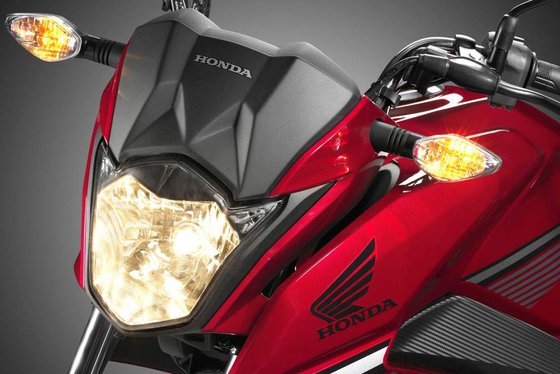
Chassis Dynamics:
The steel backbone frame and 1295mm (51-inch) wheelbase strike a Goldilocks balance – stable enough for highways, flickable for alleyway U-turns. Weighing 129kg (284 lbs) wet, it’s manageable for riders as light as 50kg (110 lbs). The 26° rake and 97mm (3.8-inch) trail lend quick steering without twitchiness.
Suspension Setup:
The non-adjustable 31mm front forks and preload-adjustable twin rear shocks handle bumps better than rivals. Over broken pavement, the 18-inch wheels (80/100 front, 90/90 rear) roll through imperfections that’d unsettle 17-inch setups. Loaded with a passenger? Crank the rear preload to position 3-4.
Braking:
The 240mm front disc with twin-piston caliper offers progressive bite – ideal for novices. The rear drum lacks feel but prevents lock-ups. ABS wasn’t an option, so practice threshold braking!
Competition: How the CB125F Stacks Up
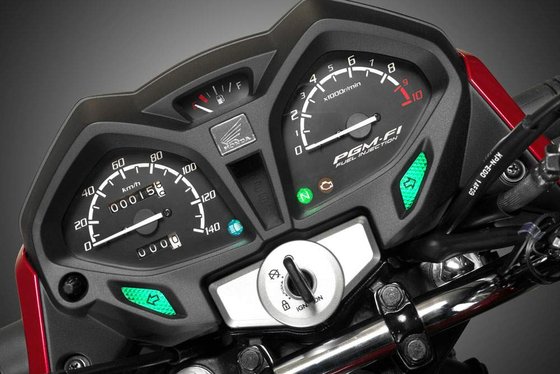
1. Yamaha YS125:
- Pros: Sexier LCD dash, slightly lighter (123kg)
- Cons: 17-inch wheels, harsher suspension, carbureted (pre-2020)
Verdict: Better for style-conscious solo riders; CB wins for practicality.
2. Suzuki Address 110:
- Pros: 113kg weight, lower seat, unbeaten fuel economy
- Cons: Scooter! Lacks the "motorcycle" experience
Verdict: CB125F for riders wanting gears and street cred.
3. KTM 125 Duke:
- Pros: 15 HP, aggressive styling, ABS
- Cons: Pricey, firm seat, premium parts costs
Verdict: Duke for thrill-seekers; CB for budget-minded commuters.
The CB125F’s Edge: It’s the Swiss Army knife of 125s – not the best at anything, but competent at everything. Resale values reflect this versatility.
Maintenance: Keeping Your CB125F Thriving
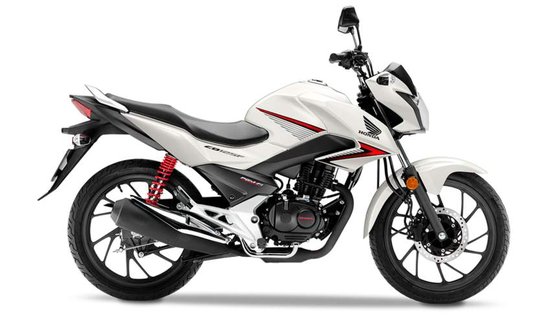
Honda’s reputation for reliability shines here, but neglect is a killer. Key tips:
1. Oil Changes:
- Use JASO MA2-rated 10W-30 (e.g., MOTOPARTS.store #MP-10W30SYN) every 6,000km.
- Filterless design? Replace the strainer washer (#MP-OILWASH125) each change.
2. Chain Care:
- O-ring chain lasts 20,000km+ with MOTOPARTS.store #MP-CHAINLUBE monthly.
- Adjust slack to 25-35mm (1-1.4 inches) every 1,000km.
3. Valve Checks:
- Every 12,000km: Intake 0.08mm ±0.02mm, exhaust 0.12mm ±0.02mm (cold).
- Shim-under-bucket design needs special tools – consider professional service.
4. Carb (Pre-2015) vs. FI:
- 2016+ models avoid carb jetting issues. For older CBs, upgrade to a #MP-FIKIT125.
5. Winterizing:
- Fuel stabilizer (#MP-FUELSTAB125) + battery tender (#MP-BATT125) prevents springtime headaches.
Upgrade Recommendations:
- Taller windscreen (#MP-CB125SCREEN) for highway comfort
- LED turn signals (#MP-LEDINDICATOR) for visibility
- Progressive rear springs (#MP-SHOCKUP125) for two-up riding
Conclusion: More Than Just a Learner Bike
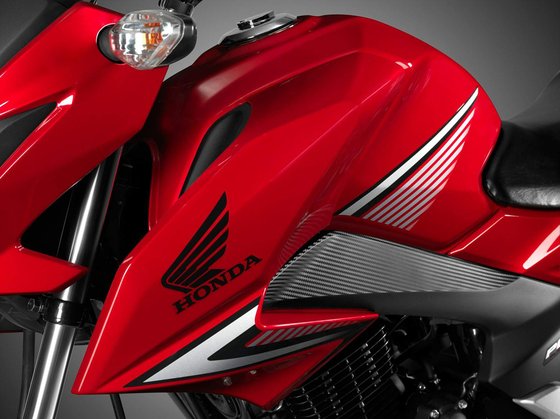
The Honda CB125F masters the art of compromise. It’s frugal yet fun, simple but not crude, lightweight without feeling flimsy. Whether filtering through gridlock, tackling mountain passes at 70 km/h, or surviving parking lot drops, this bike takes abuse and asks for nothing but basic care.
For new riders, it’s a patient teacher. For veterans, a guilt-free runabout. And for MOTOPARTS.store customers, a blank canvas – reliable enough to keep stock, but begging for personal touches. Five years post-production, the CB125F’s legacy is secure: proof that sometimes, less really is more.
Ready to personalize yours? Explore our curated CB125F parts collection here.
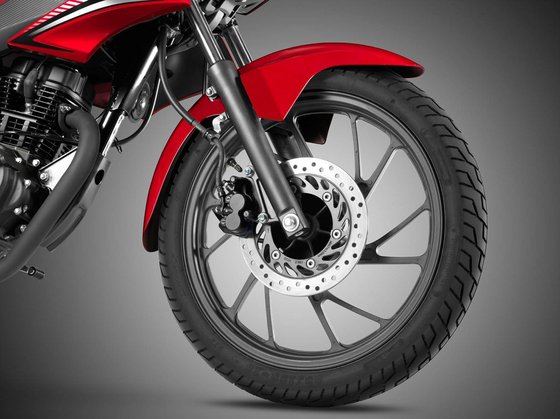
Specifications sheet
| Engine | |
|---|---|
| Stroke: | Four-stroke |
| Max power: | 8 kW | 11.0 hp |
| Max torque: | 10 Nm |
| Fuel system: | Fuel Injection (PGM-FI) |
| Lubrication: | Wet sump |
| Max power @: | 7750 rpm |
| Displacement: | 125 ccm |
| Max torque @: | 6250 rpm |
| Configuration: | Single |
| Cooling system: | Air-cooled |
| Compression ratio: | 9.2:1 |
| Number of cylinders: | 1 |
| Dimensions | |
|---|---|
| Wheelbase: | 1295 mm (51.0 in) |
| Dry weight: | 128 |
| Wet weight: | 129 |
| Seat height: | 775 mm (30.5 in) |
| Overall width: | 765 mm (30.1 in) |
| Overall height: | 1080 mm (42.5 in) |
| Overall length: | 2035 mm (80.1 in) |
| Ground clearance: | 160 mm (6.3 in) |
| Fuel tank capacity: | 13 L (3.4 US gal) |
| Drivetrain | |
|---|---|
| Clutch: | Wet, multiplate with coil springs |
| Final drive: | chain |
| Chain length: | 122 |
| Transmission: | 5-speed |
| Rear sprocket: | 45 |
| Front sprocket: | 15 |
| Maintainance | |
|---|---|
| Rear tire: | 90/90-18 |
| Engine oil: | 10W30 |
| Front tire: | 80/100-18 |
| Idle speed: | 1500 ± 100 rpm |
| Break fluid: | DOT 4 |
| Spark plugs: | NGK CPR7EA-9 or NGK CR7EIX |
| Spark plug gap: | 0.8–0.9 mm |
| Forks oil capacity: | 0.29 |
| Engine oil capacity: | 0.8 |
| Engine oil change interval: | Every 5000 km or 2 years |
| Valve clearance (intake, cold): | 0.06–0.10 mm |
| Valve clearance check interval: | 24,000 km / 15,000 mi |
| Valve clearance (exhaust, cold): | 0.10–0.14 mm |
| Recommended tire pressure (rear): | 2.0 bar (29 psi) solo, 2.3 bar (33 psi) with passenger |
| Recommended tire pressure (front): | 1.75 bar (25 psi) |
| Chassis and Suspension | |
|---|---|
| Rake: | 26° |
| Frame: | Steel backbone |
| Trail: | 97 mm (3.8 in) |
| Rear brakes: | 130 mm drum |
| Front brakes: | Single 240 mm disc, 2-piston caliper |
| Rear suspension: | Dual rear shocks with 5-step spring preload adjustment |
| Front suspension: | 31mm telescopic fork, non-adjustable |
| Front wheel travel: | 120 mm (4.7 in) |



